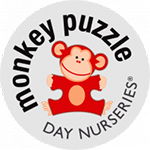How do I know if it is the right time for potty training? There is no right time! Much like everything else to do with children between the ages of 3 months to 5 years, the whole adaption process is unique to each individual child.
Using a potty is a new skill for your child to learn, and often a new skill for you to teach. It’s best to take it slowly and go at your child’s pace. Dedication, encouragement, consistency, and patience are key factors in potty training, no matter when they’re ready for this change.
Remember, you cannot force your child to use a potty. If they are not ready, you will not be able to make them use it, however in time, they will naturally want to take this next step. Try potty training when there are no great disruptions or changes to your child’s or your family’s routine – it is important to stay consistent, so you do not confuse your child. Potty training is best to begin once your little one has begun to show signs of development of their bladder control. These signs include:
- they know when they’ve got a wet or dirty nappy
- they acknowledge when they have urinated or need to urinate and let you know
- the gap between wetting is at least an hour
- they show they need to urinate by fidgeting
Once your little one has begun to do the above things, this could be a sign indicating it is the right time to start your potty training. So, what are the next steps? Aside from the above advice on ensuring it is the right time and that you stay consistent, we have put together some top tips to help you through this new learning experience, for both you and your child.
6 top tips for potty training
- Place the potty in an appropriate place. The bathroom is the obvious location for potty training as this can help them associate going to the toilet with this room in your home. If you live in a house it can help to have one potty for upstairs and another for downstairs, so there’s always one close at hand.
- Go after meals. Eating and digesting food can often trigger the urge to use the toilet, so just after meals can be a good time to sit your child on the potty. It also helps let your child know that using the potty will become a routine. Again, this will take patience, your child may not actually need to use the potty after eating, and this is totally fine!
- Make it a fun routine. You could create a potty-training progress sticker chart, and then hang it near the potty or in the bathroom. Every time your toddler does a good job, let them place a sticker on the chart. Commenting on what a big boy or girl your child is for using the potty is a great way of giving encouragement. It is best to stay away from rewarding your little one with presents, especially sweets, as a reward like this could create a bad habit – making it harder to stop when they reach the age of using the potty or toilet naturally.
- Dress code. There, of course, is no specific dress code for potty training, however it will make the process a lot easier for both you and your little one if you make sure your child’s clothes are easy to remove, especially in the winter. By the time your toddler manages to get out of several wintery layers, it might just be too late.
- Train by example. Take your child with you the next time you need to use the toilet, to show how easy it is. It can help to explain what’s happening, while it is happening. If this is not convenient for you, you could use your little ones favourite doll or teddy bear to act out how they use the potty.
- Don’t punish mistakes. Although potty training struggles can sometimes be frustrating, try not to get angry or punish your toddler for their accidents or for not being able to go. Instead, let your child know that it’s OK and they can try again later. Added pressure will not help them learn any faster. It is important to be prepared for setbacks. As we advised before, be patient and encouraging.
What we do in our nurseries
At Monkey Puzzle Day Nurseries, the nursery will begin by ensuring both the child and parents are ready for the process. On an occasion, our nursery teams may suggest to our parents to start the potty training at home, as they will have more of a grasp on when their little ones are ready for it. This will then continue as your child attends the nursery, with their key person supporting them through this journey. Some of our settings allow children to bring their own potty or toilet seat from home to make it less scary for them.
Before starting the toilet training, our nursery teams will share their toilet training policy with the parents to ensure they understand the entire process and answer any questions that the parents may have.
Remember, like we said before, every child is unique, and sometimes the first toilet training attempt may not be successful due to several reasons. In that case, your child’s key person would suggest giving it a little break and re-introducing it in 2-3 months.
So, what are the most vital parts of potty training? Dedication, encouragement, consistency, and patience. Remember to take your time and ensure your little one is ready for this next step. You’re doing great!
